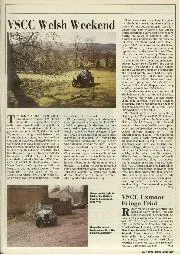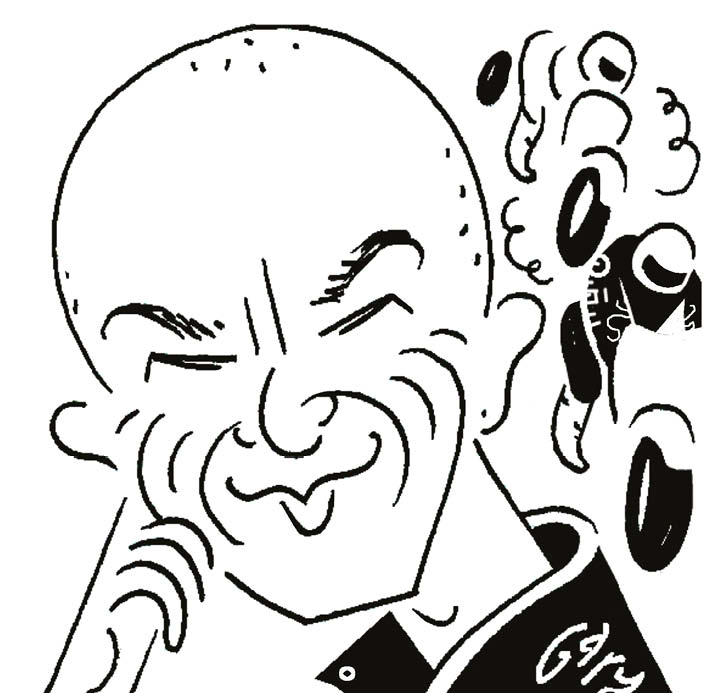
VSCC Exmoor Fringe Trial
Run on March 18, with 32 entries, and based at North Molton. Ten cars were penalised for being brought on trailers. Best showing was that of Tim Wellock (A7), Best…

If there is a racetrack in heaven it is called Spa-Francorchamps. Of that I have no doubt. The 4.3 miles of asphalt that winds its way across the hillsides and through the forests of the Ardennes is like a poem to the joys of racing motorcycles.
The lap starts with possibly the most awesome piece of road on Earth. You accelerate hard out of La Source hairpin, shifting gears and skimming the Armco through the right-hand sweeper that takes you onto the start/finish. You’re now in fifth gear, travelling downhill towards the left side of the track, but you continue your arc that takes you back to the right, towards the pit wall, as you shift into top gear. The aim (at least this was my aim when I was doing the Spa 24-hour motorcycle race) was to scare the Beejaysus out of your lap scorer, sitting stoically on the pit wall.
Once you’re a metre from the wall you veer left, preparing for the Eau Rouge left-hander at the bottom of the hill. As you lean left you hang off the right side of the motorcycle, because there’s no time to switch your body to the right as you attack the first part of the Raidillon right/left sequence. At this moment the upward incline of the road is so steep that Raidillon appears like a wall in front of you. And such is the compression in the dip that it knocks the wind out of you.
You now veer right, climbing steeply, crest the brow, where the front wheel lifts, and then you veer to the left, for the long run towards Les Combes. Your heart is pumping, your brain is buzzing, and you’re already looking forward to starting your next lap, even though you’ve got the delights of Pouhon, Courbe Paul Frère and Blanchimont.
Spa hosted its last motorcycle grand prix in 1990 and its last 24-hour bike race a few years later. The circuit had simply become too dangerous for world-class bike racing.
But not anymore, in theory, at least. The world’s greatest purpose-built racetrack is due to undergo safety upgrades planned to bring world-championship motorcycle racing back to the venue that staged its first bike GP in 1921.
“If you’ve got enough money, you can make anywhere safe”
The aim of the region’s Walloon Government is to host a 24-hour world championship race in 2022, followed by a MotoGP world championship round in 2024.
This is an ambitious project, because Spa is a long way from meeting minimum MotoGP safety demands. The circuit will have to spend a fortune to increase runoff around the track, most especially at Eau Rouge, Raidillon (where French Formula 2 driver Anthoine Hubert lost his life in August) and the ultra-fast Blanchimont left-handers towards the end of the lap.
Apparently the circuit does have the money; or at least it’s borrowing the money. A few months ago the Walloon Government approved an initial loan of some £26 million from SOGEPA, a local public investment fund. That is the first slice of a finance plan which totals around £71 million. A mind-boggling £45 million of this will be spent on making the track safe for motorcycle racers.
“If you’ve got enough money you can make anywhere safe,” says ‘King’ Kenny Roberts, who won the Spa 500cc grand prix in 1983. “It’s a good racetrack, but there’s a few corners that’ll need changing and they’ll need a lot more runoff in a few places. All they need to do is move a couple of mountains!”
Roberts, like many riders from years ago, loved fast and dangerous tracks like Spa, while he simultaneously campaigned to have them removed from the world championships. Two of the last grand prix riders to compete at Spa were fellow Americans Kevin Schwantz and Wayne Rainey, who won the final Belgian 500cc GP in July 1990. “Spa was just awesome, I loved it,” Rainey recalls. “Raidillon was intense. Going up there the bike would get light on the exit and real loose and sideways, especially in the rain. Probably the most intense corner was Blanchimont. It was fifth gear, no runoff. Everybody was pretty much the same around the rest of the track, so you knew you had to pick up time through Blanchimont. That’s where you didn’t want to have to do that, but you just did it.”
Schwantz started the last two Spa 500 GPs from pole, because the wild-riding youngster was famed for his willingness to take even bigger risks than men like Rainey.
“I enjoyed places like Spa – I really liked those fast lefts at Blanchimont,” Schwantz remembers. “I remember getting pole there in 1989 and hearing [Wayne] Gardner or [Eddie] Lawson or someone saying, ‘I don’t know what Kevin’s doing out there, but obviously nothing scares him’. I wasn’t smart enough to realise the imminent danger, but places like that allowed me to make a gap over the other guys. Suzuka was the same – most of the other guys would go, ‘F**k, the guardrail’s right by the track through that 120mph turn…’.”
If Spa does get the money and does spend it to make the track motorcycle safe once again the
Belgian MotoGP round will be unmissable. There is only once concern – if they make the track that much safer will they dilute its epic nature?
Mat Oxley has covered motorcycle racing for many years – and also has the distinction of being an Isle of Man TT winner
Follow Mat on Twitter @matoxley